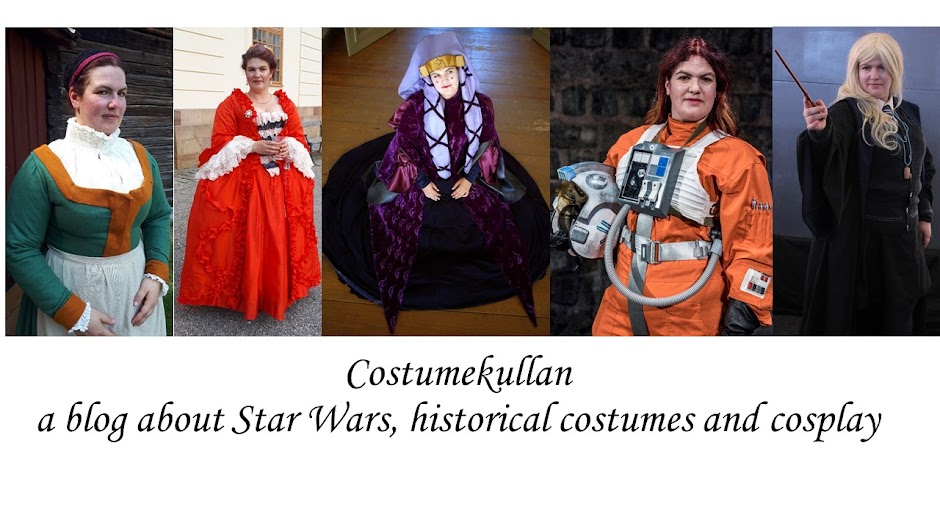I cut out the shift earlier in July, it's a basic square pieces with gores shift. I will say though that for a busty girl like myself this is not the best shift. It's really tight over the bust, since the gores are too narrow at the top to widen it over the bust, and if I want to make the front piece big enough to be roomy over the bust, well then the shoulder seam end up almost at my elbow. It works though, even if it's more medieval than viking, and not as roomy as I had planned. It's made in unbleached linen, I have sewn the main seams on machine, but felled and hemmed it by hand.
Over the shift I've done a classic Viking apron dress. I made it from the leftovers of the green wool of my 1520's outfit, which also dictated how wide I could make the dress.
Instead of using a pattern I cut the fabric in four equal pieces. There are finds from Hedeby/Haithabu that show that the dress were made with shaped pieces and not just squares. I then simply pinned the fabric until it was tight just above the bust. I made it just tight enough that it almost falls down, but not quite. Under the bust I made an angled seam that met the edge of the fabric, to get as much width as posible out of the fabric. I'm not totally happy with the fit, but it will do, and I can adjust it later. All the long seams are sewn on machine, and since the wool doesn't fray I haven't done anything to finish the seams on the inside. That is also in case I want to adjust it later. It's hemmed at the top and bottom by hand.
The dress is held up by two sets of straps. Each strap is made of two loops of fabric, the same as the dress. The shorter loop is at the front and th longer in the back, I've placed them approximately where on the same place as bra straps.
tt
The loops are connected by brooches in the front.
All vikings love bling, so of course I needed to bling up my costume. I started with the decorating the front with a piece of yellow silk, leftover from my handmaiden gown. The strip of silk is a nice background to the beads that I added in the front. The beads come from three different necklaces that I already had, but never used.
The green beads are proper reproduction of viking beads. They are a prize from when I was 11 and competed on national TV with my knowledge of vikings. (Kvitt eller Dubbelt for those Swedes who remember that show). I failed on the last question so I never got the prize money, but I got the full prize table, wich included these beads. The necklace with blue and yellow beads are bought at a Viking market, so at least inspired by proper viking beads, the topmost necklace are just random beads. I strung the beads up on a piece of leather string, and got rid of the most modern looking beads.
This is the finished ensemble. My tortoise brooches are the most glaring inaccuracy, since they are way too small compared to actual finds, the also have a modern pin in the back instead of the hooks that should connect the loops of the straps. Still they cost a fraction of the prize compared to a proper pair of tortoise brooches.
All in all it took me a day to make the apron dress, the shift has been a work on and off during the summer. It's a passable Viking costume, and that was my goal with this costume.



























































